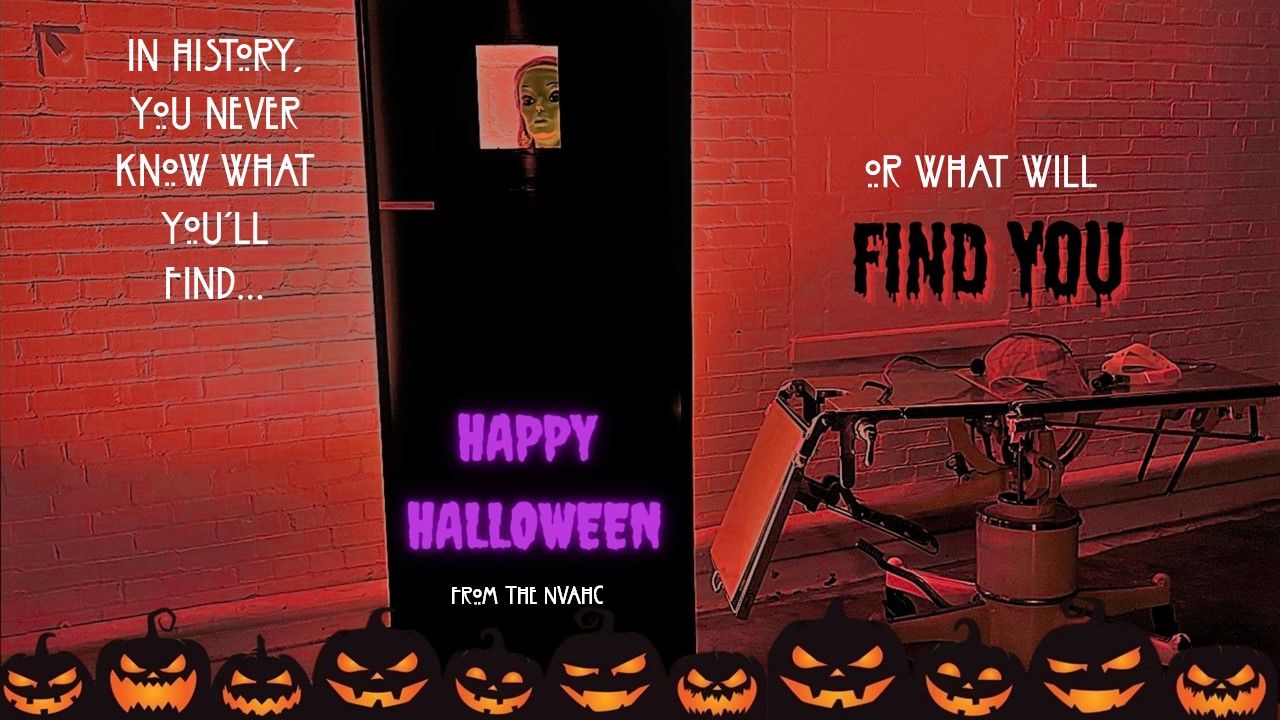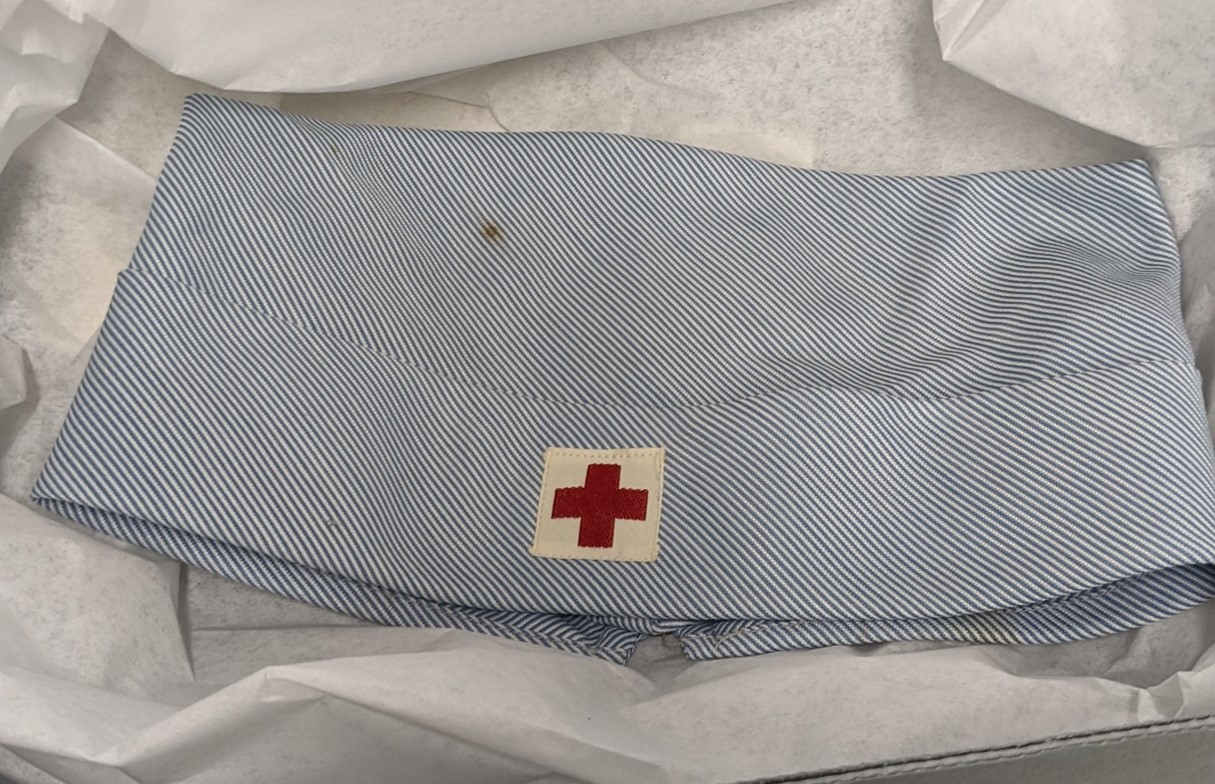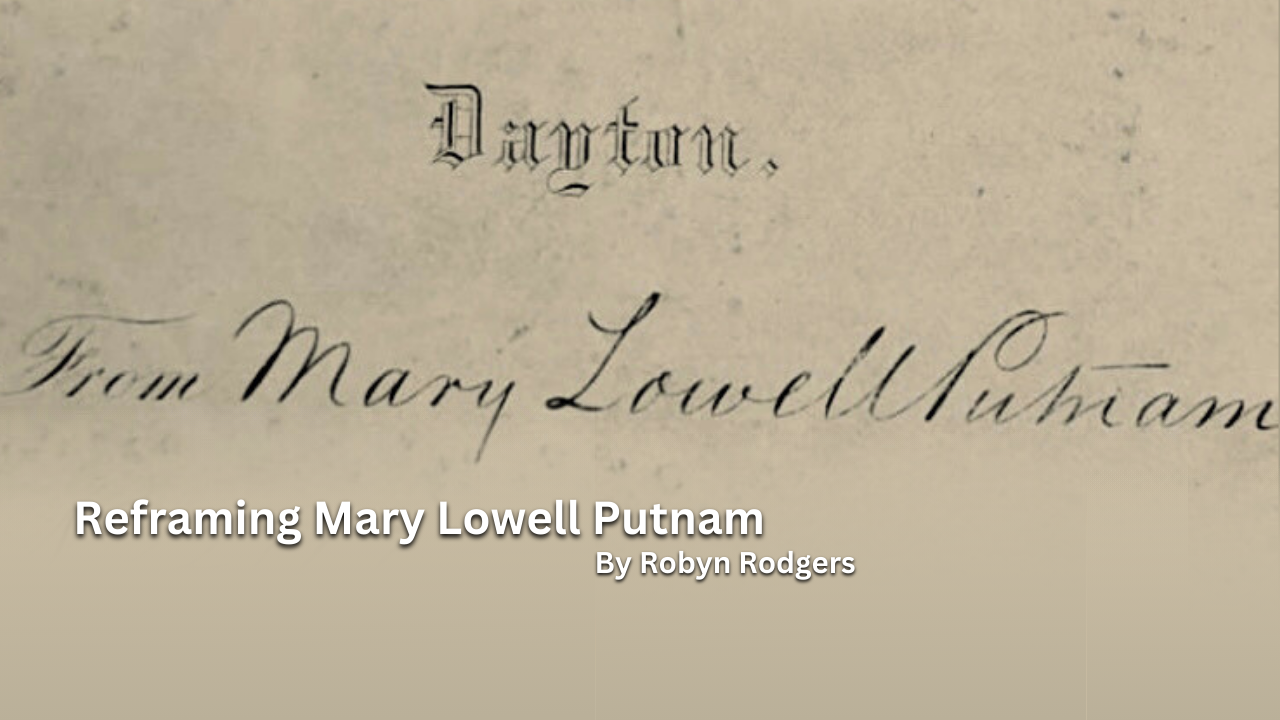If you were a movie goer in the 1990s, the image and the phrase “what’s in the box?” from the movie Se7en evokes specific memories, but moviegoers knew the contents. But we sympathized with Brad Pitt as his character realized that the answer was a grisly discovery (watch the clip to see for yourself). While we never actually see what is in the box, it is a powerful moment as the movie reaches its finale. The National VA History Center team recently had a similar experience when opening a box in our growing collection.
If you read our previous Halloween themed Curator Corner Happy Halloween and creepy dolls – VA History, you know that we have several creepy dolls in our inventory. When opening the last box of what we thought were rehabilitation dolls, we discovered a mannequin head and had our own what’s-in-the-box moment. Initially, we weren’t sure why it was included in the objects we received from Mountain Home VA Medical Center. Since it was not part of the rehab dolls collection, we put it back in the box and did not give it much thought.

Recently, we started going back through our items, and we realized the head was a good Halloween image. We were looking for something with an “American Horror Story” feel. When we took it out of the box to photograph, we discovered the reason for the mannequin head. Tucked into the wrapping paper was a cap worn by a Red Cross volunteer at the Mountain Home VA. Fortunately, the cap included a handwritten note with some background on the object:
“Red Cross Volunteer Worker Cap from About 1949-50, Worn by Thelma Glisson who is currently a vol. for SWS in the RCH Program (& has been for years!) -KH 9-14-90”
Note transcription
This style of cap was worn after World War II and was important because it easily distinguished a Red Cross volunteer nurse from other staff. While the uniforms changed over time, the Red Cross has remained the key symbol for volunteers. You can learn more about the history of the Red Cross nursing program at their website.
Hopefully, these spooky images will not haunt your nightmares.
Have a great Halloween from the VA History Office.
By Kurt Senn
Curator, National VA History Center
Share this story
Related Stories
Curator Corner
It isn’t often that researchers who work with historic objects get to know the people who used those objects every day. Sometimes we get lucky and can link artifacts to certain facilities or buildings on a historic VA campus, but usually we must look for more hidden lines of evidence to figure out how an object fits into the history of those who care for our Nation’s Veterans. As nice as it would be, it isn’t as if many artifacts turn up labeled with their owners’ names! So, imagine my surprise when my teammates and I began sweeping Putnam Library for any historic objects left behind before the building is closed for renovation, and found just that.
As far as artifacts go, its story seemed simple: book presses like these would have been used to help maintain and repair the thousands of books read in Putnam Library ever since it first opened in 1879. The day that I first got up close and personal with the press, I noticed a woman’s name scraped into the black paint of the platen (the technical name for the big metal plate used to hold books together). It said “Helen Carson” in big, legible letters. As we carefully transported the heavy press down the many stairs inside Putnam Library, I looked at the name and thought “Hm…wonder who that is?”.
Curator Corner
Mary Lowell Putnam is tied to VA history by her generous donation of a large volume of books to the Central Branch of the National Home for Disabled Volunteer Soldiers. These books, meant to honor her son who died in the Civil War, helped foster reading advancement for the Veterans who lived there after the war and into the 20th Century. However, her life was more than just a moment in time donating books. It included a life-long study of languages and a very sharp opinion that she shared in writing throughout her life.
Curator Corner
Presidents George Washington and Abraham Lincoln are among the most easily recognizable figures in American history. Their faces are symbols of wisdom, strength, and leadership. Even today, polls consistently rank them as the greatest or most successful presidents. With that in mind, it is unsurprising that the appreciation of these legendary statesmen has deep historic roots. In honor of their birthdays, our team at the National VA History Center explored those roots through this pair of plaster busts.








